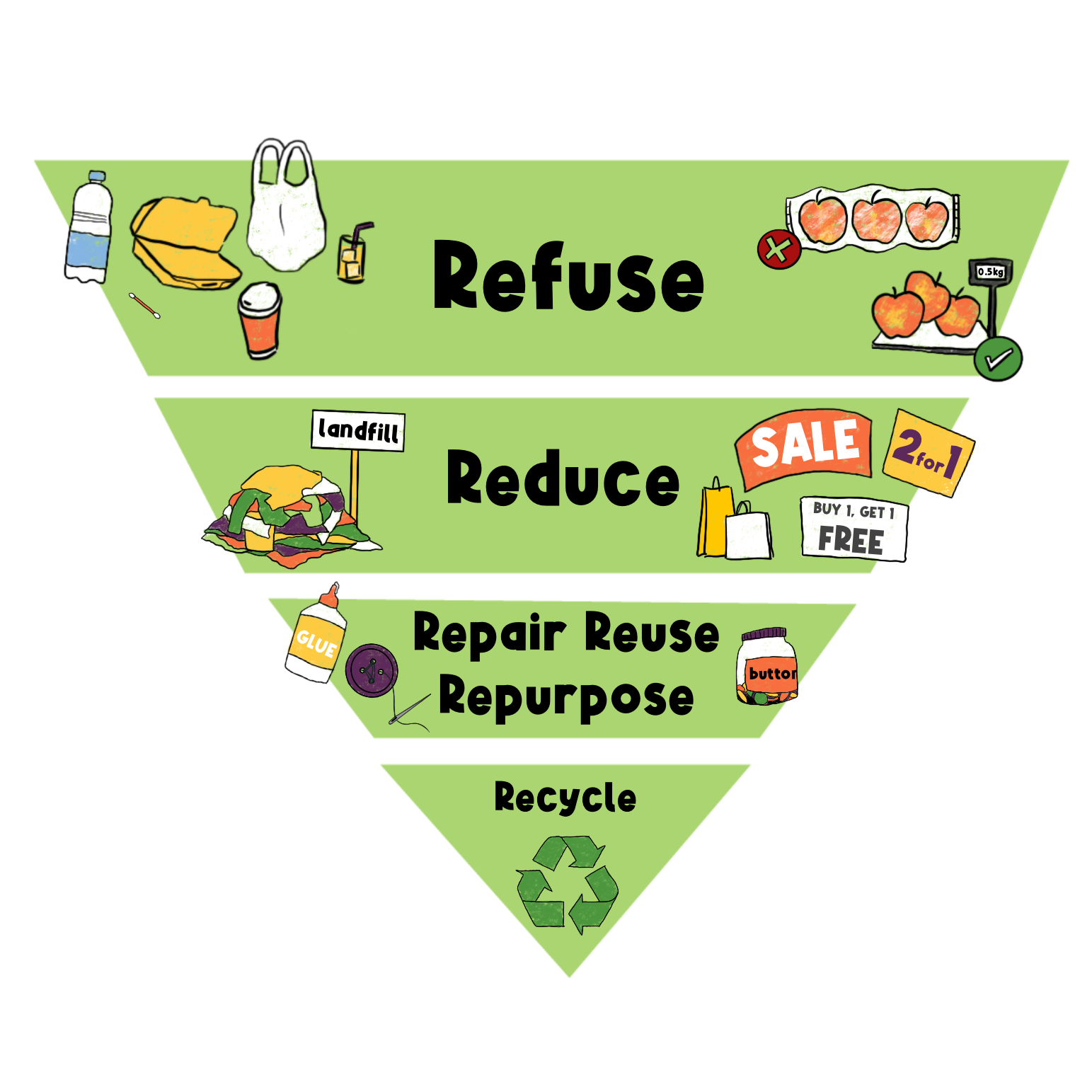The smaller picture
Consumption
Consumption: What can we do at home?
There are several easy ways we can reduce physical waste at home in the Meadows.
We can start by looking at a series of steps that we can implement into our daily actions and activities.
General Consumerism and Waste
As a result of a growing population and an ever-increasing demand for products, we are also using resources faster than they can be replaced. This has a cost on the environment and climate change, due to the mining and manufacture of products which are all too easily thrown away.
What can we do to break the cycle of supply and demand? Are there more clever, sustainable ways to consume? Keep reading.
The Bigger Picture: Consumerism
Products are built to be discarded or replaced, rather than to last. To make it worse, they use unnecessary or excessive packaging and damage the environment through mining or poor waste treatment. Most products are unsustainable by design. So how does this impact our world? And what can we do to avoid this?
Plastic: The Bigger Picture
In the UK, over 5 million tonnes of plastic is consumed each year — and yet only 1 quarter of it is recycled. If we imagine all of that waste sitting in landfill and littered across our streets, the bigger picture starts to look like a huge problem for our natural environment and our wildlife.
Plastic: The Smaller Picture
Once you start looking at plastic at home, you realise it is used in everything. From household items to industrial goods, it seems that nearly everything is made from plastic. It makes you wonder how people managed without plastic before. Fortunately, there are alternatives to plastic, and for those instances where plastic use is unavoidable, proper recycling is important.
The Plastic Problem
Plastic is big news these days. Plastic is used extensively in all areas of our modern life, and avoiding it isn’t easy. So, what’s the issue with plastic?







